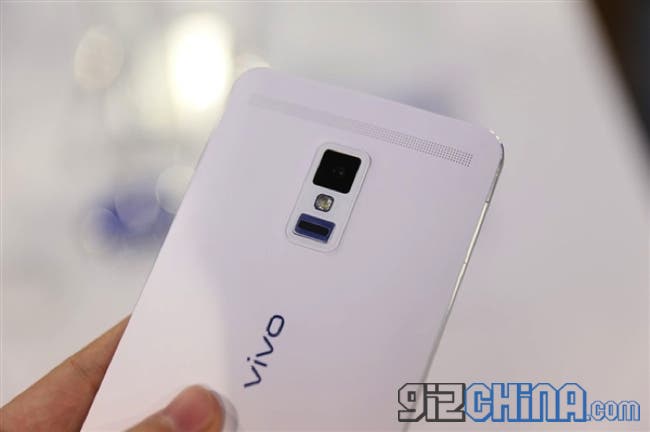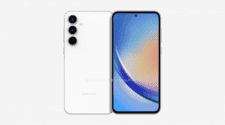Vivo launched their much anticipated flagship phone yesterday in Beijing, here are the full Vivo Xplay 3S specifications along with details and photos.
Before the Vivo Xplay 3S launched, Vivo had already leaked many of the major specification details (probably knowing that they would be the first to launch such a beast), but still there were a few details left until the official launch.

Some early leaks claimed the Xplay 3S would feature a rotating camera similar to the one found on the Oppo N1, but this turned out to be nothing more than rumour rill feed, there were also rumours of a dual-glass body, also false. The rest of the hardware is straight out of an Android fans dream, with the exception of NFC which is missing form the official specifications.
Gizchina News of the week
Vivo Xplay 3S Specifications
[komper pid=143 compareform=no]Vivo Xplay 3S gallery
Vivo Xplay 3S Photo+ Video
Vivo Xplay 3S Specification intro video
Vivo Xplay 3S, the ultimate smartphone?
Vivo wanted to wow the world with the Xplay 3S and I think they have certainly caught the attention of most of us. The 6-inch 2K phone sure is feature packed and is sure to boast impressive performance, but is it the ultimate Android smartphone? Is it a phone you would buy?
Personally I was hoping for innovation, something new, yes the phone has a 2K display but that doesn’t really excite me all that much. The Xplay 3S is an impressive phone, but it is nothing new just a bigger, faster, clearer more powerful version of phones already on sale. What do you think?





As an audiophile, I would really keen to hear how good the Sabre 9018 sound. The Xplay with a Cirrus Logic chip is very good but can the 9018 better the sound quality?
Also, the DTS Headphone X is a surprise inclusion and I am sure watching movies is going to be awesome!
Vivo, well done!
The Photo+ and airwake was pretty innovative for me but what made me buy this phone was the audio chip and features. I can’t wait to get my hands on it.
Oh come on now!!! No SD card? This is so unfair 🙁
agree with you on that Andi
its similar to current crop.Their last Phone was really with WOW Factor.
i would rather go for Oppo because of the crazy Cam that you bought or Gionee E7.
As an audiophile, I would really keen to hear how good the Sabre 9018 sound. The Xplay with a Cirrus Logic chip is very good but can the 9018 better the sound quality?
Also, the DTS Headphone X is a surprise inclusion and I am sure watching movies is going to be awesome!
Vivo, well done!
The Photo+ and airwake was pretty innovative for me but what made me buy this phone was the audio chip and features. I can’t wait to get my hands on it.
Oh come on now!!! No SD card? This is so unfair 🙁
agree with you on that Andi
its similar to current crop.Their last Phone was really with WOW Factor.
i would rather go for Oppo because of the crazy Cam that you bought or Gionee E7.
“it is nothing new just a bigger, faster, clearer more powerful version of phones already on sale”
and of course MORE EXPENSIVE!
This comment was deleted.
64-bit processors just give more addressable memory space. Since We’re onlu going up to 3GB, I think that point is irrelevant.
I think what you meant to say was that they should have used the newest Snapdragon 805, instead of last years model 800.
This comment was deleted.
wow… just wow…
It has been PROVEN that a 64 bit program processes at 15-20% faster than a 32 bit program on the EXACT same processor???
WTF ??? EXACT same processor???
Thats just stupid…
This comment was deleted.
I’ll keep it civil.
What you said doesn’t apply in this case. to get those types of gains you need a serious multi-stage compiler, and Android’s Dalvik and ART technology aren’t up to the task.
Maybe in a few years their Java bytecode compiler will be able to eek out 5-10% extra performance at the same clock speed, but it’s not something that’s done now.
Additionally, doubling the data and address path width has to come from somewhere, and it’s roughly equivalent of the doubling from 4 to 8 cores. I think that Android’s architecture is currently most efficient around 4 cores (those 8 core benchmarks are faster because each core is faster and they’re mostly testing the graphics processors).
It would be better to use the die space to REALLY optimize each core’s performance and to increase the pipelining so that we could move up to speeds of 4-6GHz without significantly increasing the power consumption.
So what I’m saying is that a quad-core with a faster architecture, 2x clock speed, and state of the art graphics coprocessor would be than a 8-core 64bit device. At least at this time while we have less than 4GB of addressable memory.
Well, x64 based programs are faster but they often takes more memory than a x86 based one. It’s my real life experience on my servers.
This looks like a nice attempt to jump ahead. I wish they would have used the Snapdragon 805, but for some reason couldn’t or decided against it.
The devil is in the details, and I’d like to see WHICH LTE bands it support. Having both FD-LTE and TD-LTE is a great plus for those of us that go between China and… ummm… everywhere else. But not so useful if they don’t support the bands used “everywhere else”.
The biggest problem with Vivo is they haven’t embraced AOSP and the open source community. Until they publish their code, their phones can’t compete against Oppo. Nobody want’s a dictatorial company holding you hostage with proprietary software (Oops, I accidentally described Apple there, but nobody that ISN’T using and iPhone wants that).
So open up Vivo or get displaced by Oppo and their spin offs!
64-bit processors just give more addressable memory space. Since We’re onlu going up to 3GB, I think that point is irrelevant.
I think what you meant to say was that they should have used the newest Snapdragon 805, instead of last years model 800.
wow… just wow…
It has been PROVEN that a 64 bit program processes at 15-20% faster than a 32 bit program on the EXACT same processor???
WTF ??? EXACT same processor???
Thats just stupid…
Well, x64 based programs are faster but they often takes more memory than a x86 based one. It’s my real life experience on my servers.
I’ll keep it civil.
What you said doesn’t apply in this case. to get those types of gains you need a serious multi-stage compiler, and Android’s Dalvik and ART technology aren’t up to the task.
Maybe in a few years their Java bytecode compiler will be able to eek out 5-10% extra performance at the same clock speed, but it’s not something that’s done now.
Additionally, doubling the data and address path width has to come from somewhere, and it’s roughly equivalent of the doubling from 4 to 8 cores. I think that Android’s architecture is currently most efficient around 4 cores (those 8 core benchmarks are faster because each core is faster and they’re mostly testing the graphics processors).
It would be better to use the die space to REALLY optimize each core’s performance and to increase the pipelining so that we could move up to speeds of 4-6GHz without significantly increasing the power consumption.
So what I’m saying is that a quad-core with a faster architecture, 2x clock speed, and state of the art graphics coprocessor would be than a 8-core 64bit device. At least at this time while we have less than 4GB of addressable memory.
“it is nothing new just a bigger, faster, clearer more powerful version of phones already on sale”
and of course MORE EXPENSIVE!
This looks like a nice attempt to jump ahead. I wish they would have used the Snapdragon 805, but for some reason couldn’t or decided against it.
The devil is in the details, and I’d like to see WHICH LTE bands it support. Having both FD-LTE and TD-LTE is a great plus for those of us that go between China and… ummm… everywhere else. But not so useful if they don’t support the bands used “everywhere else”.
The biggest problem with Vivo is they haven’t embraced AOSP and the open source community. Until they publish their code, their phones can’t compete against Oppo. Nobody want’s a dictatorial company holding you hostage with proprietary software (Oops, I accidentally described Apple there, but nobody that ISN’T using and iPhone wants that).
So open up Vivo or get displaced by Oppo and their spin offs!